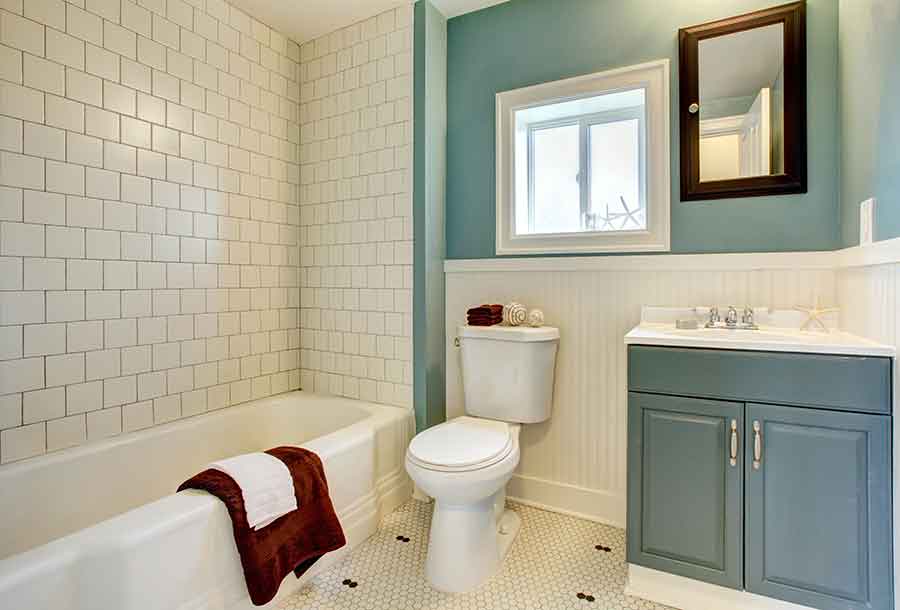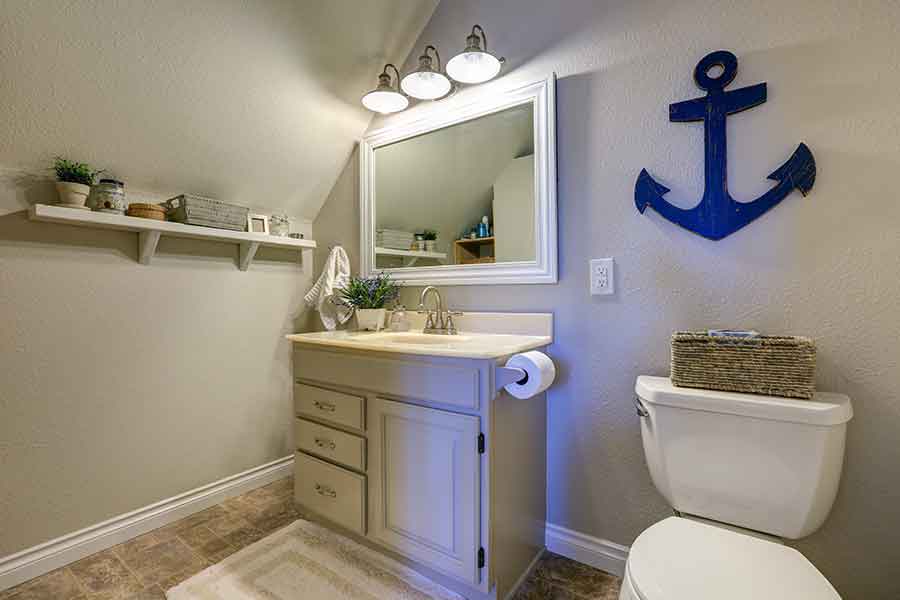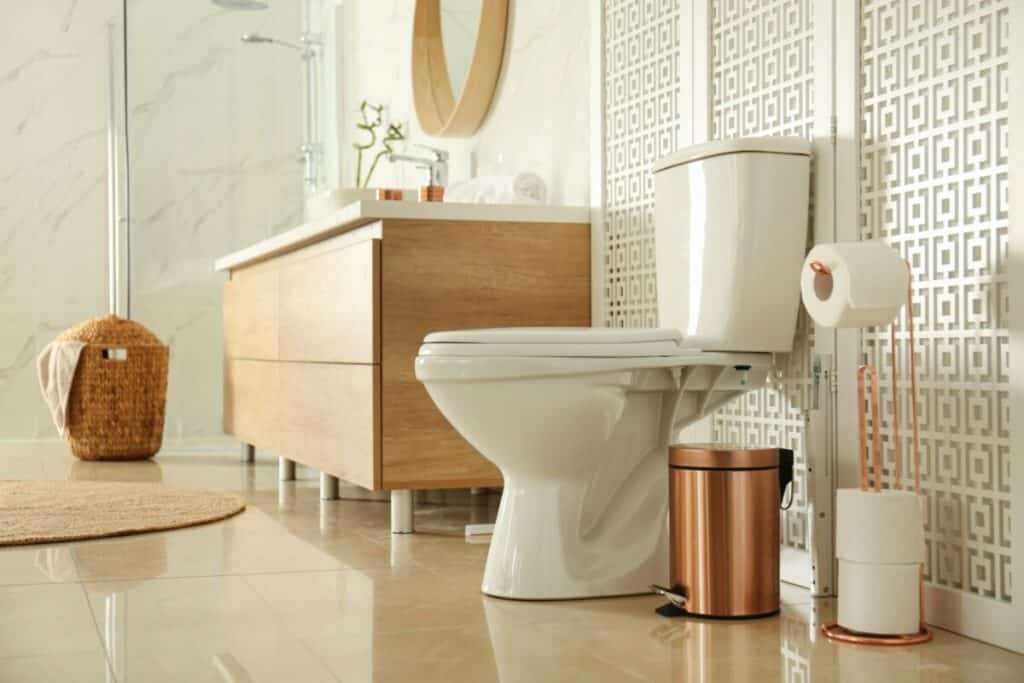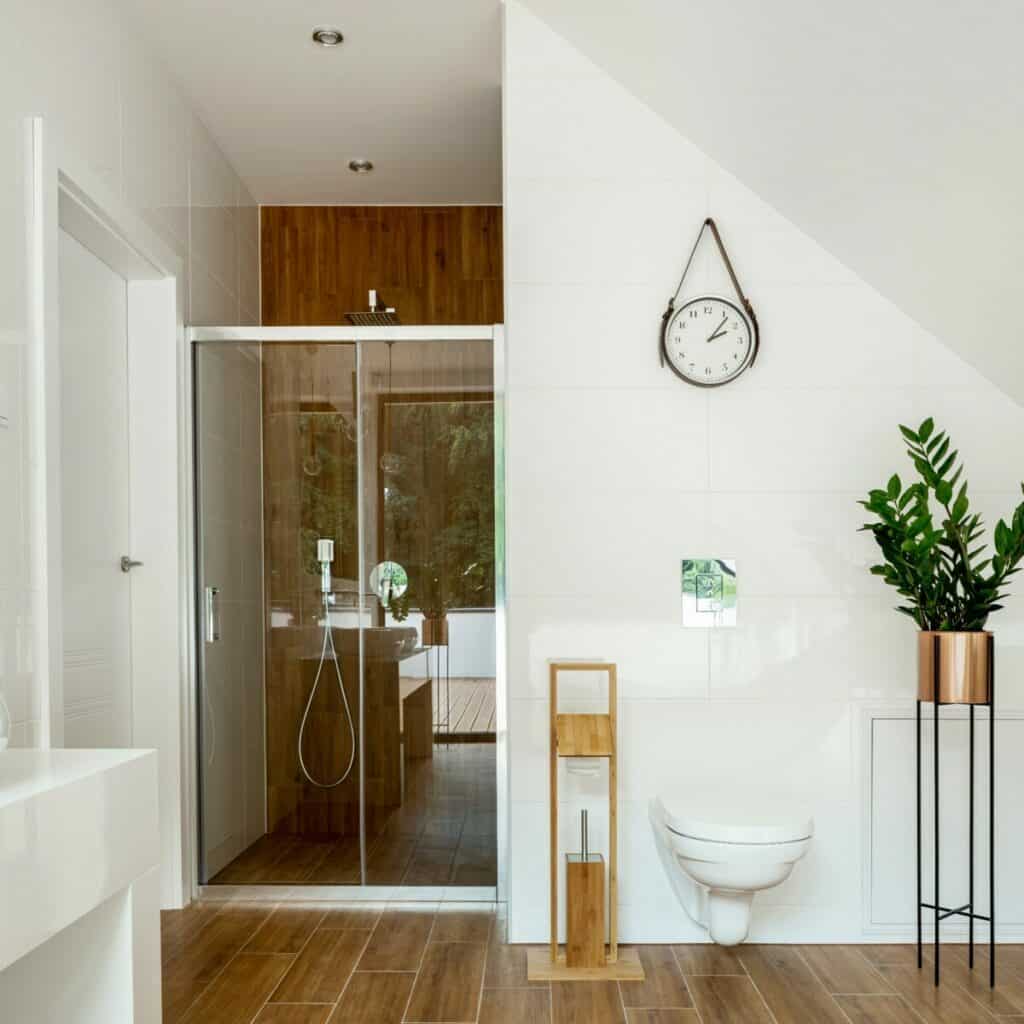Standard Size for a Toilet Room: Dimensions & Layout
Last Updated on September 22, 2022 by Alex Cubias
Building, renovating, or even simply redoing a space can be overwhelming. There are so many industry rules, regulations, and standards to keep track of, all while trying to stay on budget and create an aesthetic but livable space. So, what is the standard size for a toilet room?
A toilet room, sometimes called a half bath, is 40 square feet on average and only contains a sink and toilet. Meanwhile, a standard full bathroom measures up to 160 square feet and features a toilet, sink, shower, and bathtub.
Although these are the standard sizes for toilet rooms in the United States, there are other requirements that one should know as well as factors they should consider when looking it build, remodel or renovate a bathroom space. We will talk more about them below.
Full Bath Vs. Half Bath
Full Bath

Every home has at least one full bath. A full bathroom is a necessity because not only does it have a sink and toilet, but a shower or bathtub as well. Since full bathrooms have more fixtures, they need to be larger. A full bath with an area of 160 feet is pretty standard in the U.S. However, in other countries or areas, they can be much smaller.
In Europe, for example, homes are generally much smaller. The bathrooms in European homes can be minuscule when compared to American bathrooms, but we will just talk about American requirements in this article.
Half Bath

Related Article: BEST COMPACT TOILETS FOR SMALL BATHROOMS
Unlike a full bath, there is no bath or shower in a half bath. A half bath can be much smaller than a full bath. In general, half baths have an area of 40 square feet that contains a sink and a toilet. The dimensions for a half bath are usually 5 feet by 8 feet to allow for the best use of the space.
Requirements and Recommendations
Along with these standard sizes for a full bath and half bath, there are certain requirements that bathrooms need to follow to be up to code. Some of these are dictated by the state or local government, while others are determined by organizations like the National Kitchen and Bath Association.
The National Kitchen and Bath Association is a group that sets guidelines, provides certification, researches, and promotes trade and professionalism in their industry. They set recommendations based on building requirements that make a space more comfortable and easy to use.
To meet code requirements, a bathroom with just a toilet needs to be at a minimum of 30 inches by 60 inches. However, to provide more comfort and accessibility, the NKBA recommends that these small bathrooms be a bit larger, measuring 36 inches by 66 inches. This extra space makes the bathroom feel less cramped.

A toilet is required to be at least 15 inches away from another feature, wall, or other obstacles for safety reasons. While this distance is up to code, if the toilet is 16 to 18 inches away from a wall, fixture, or other obstacles like the National Kitchen and Bath Association recommends, users will feel less crowded or restricted as well as be able to move around the small space with more ease.
Concerning how much space should be in front of the toilet, the NKBA agrees that the code requirement of 21 inches is sufficient. When installing a toilet, the height of the seat is also important. A toilet seat should be no less than 15 inches and no more than 19 inches from the floor.
Accessibility Factors
Accessibility is a large factor to consider when deciding how big to make the bathroom as well as where to place the different features. The layout of a bathroom does a lot to make it more accessible and easy to use.
One common practice done by architects is to place all fixtures that need a water source along the same wall. By doing this, they leave space for another person to pass by if multiple people are using the bathroom. Another benefit to this layout is that all water pipes are connected to one wall. This makes any possible future repairs or renovations easier.
There are also specific requirements one has to follow to make a bathroom wheelchair accessible. These requirements differ depending on how the toilet is installed in the bathroom. If the bathroom features a wall-hung toilet, then the bathroom needs to be at least 60 inches wide and 56 inches deep. On the other hand, if the toilet is mounted on the floor, it just needs to be at least 59 inches deep in the bathroom.
Bathroom Doors
The type of door someone picks for their bathroom also affects how accessible the bathroom is. If the bathroom is on the smaller side, it is best to install a pocket or swing-out door. If one is pressed for space, the pocket door is the way to go. These doors are pulled out from the wall and disappear completely when open.
With a swing-out door, the space in the bathroom may be impeded a little. There are guidelines concerning how much space a swing-out door should take up too. A door shouldn’t get in the way of any cabinets, drawers, or people trying to use the bathroom.
Other Factors of Good Bathroom Design

Another recommendation that helps bathrooms feel bigger is to have clear floor space. Building codes require a distance of 21 inches in from of the toilet or tub and a space of 24 inches in front of the shower. The NKBA recommends leaving more space, about 30 inches, between all fixtures.
While there are no national building codes concerning how high the vanity or a mirror in a bathroom should be, there are some guidelines to make sure everyone can see themselves. The standard vanity is about 32 to 36 inches high, which means most people can use it. If the vanity is too tall, one can always invest in a step stool to reach it.